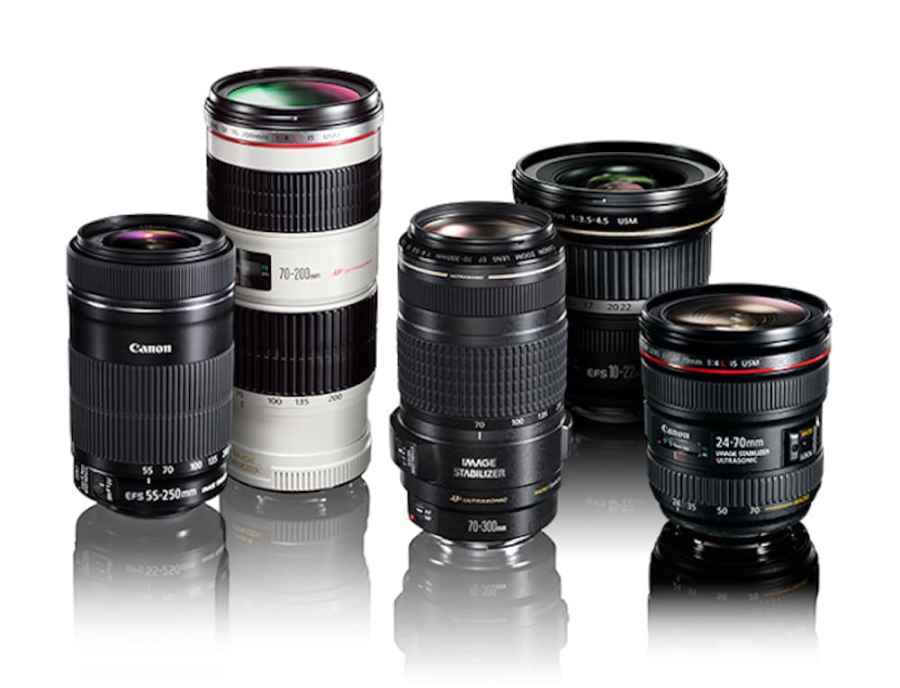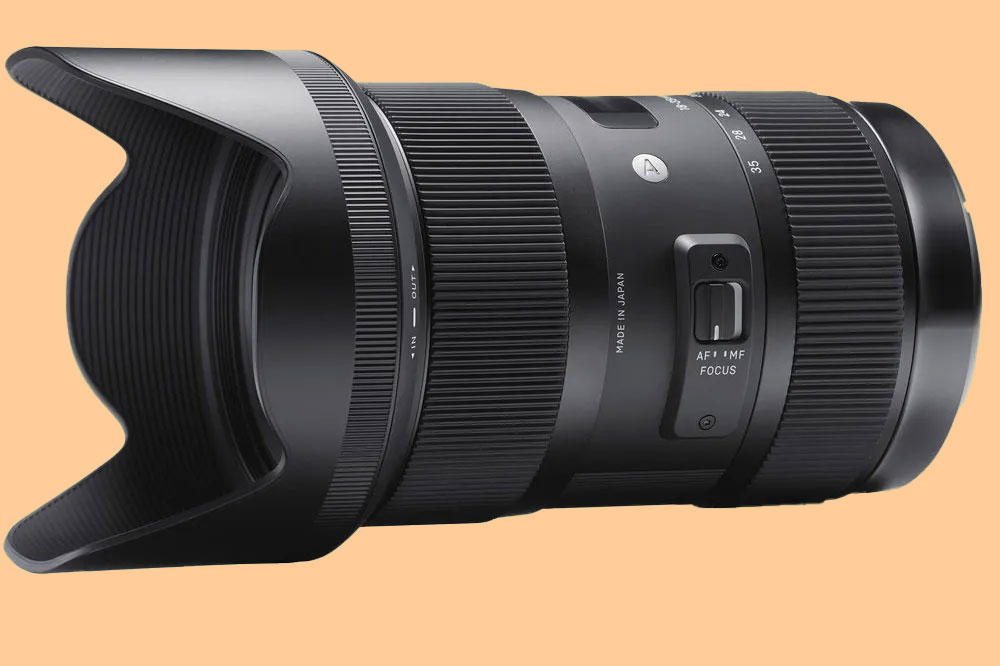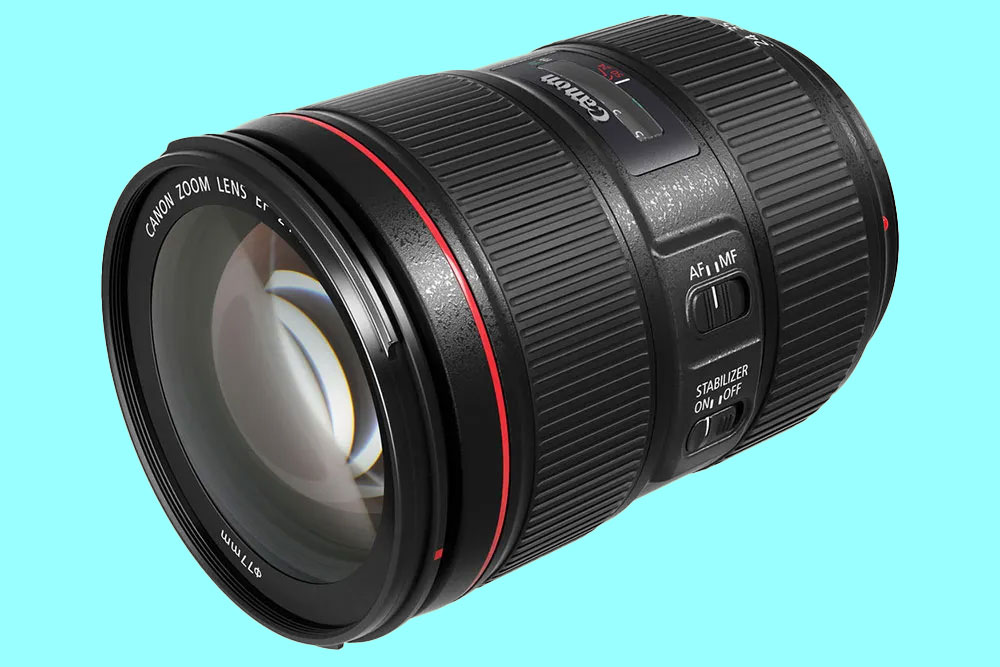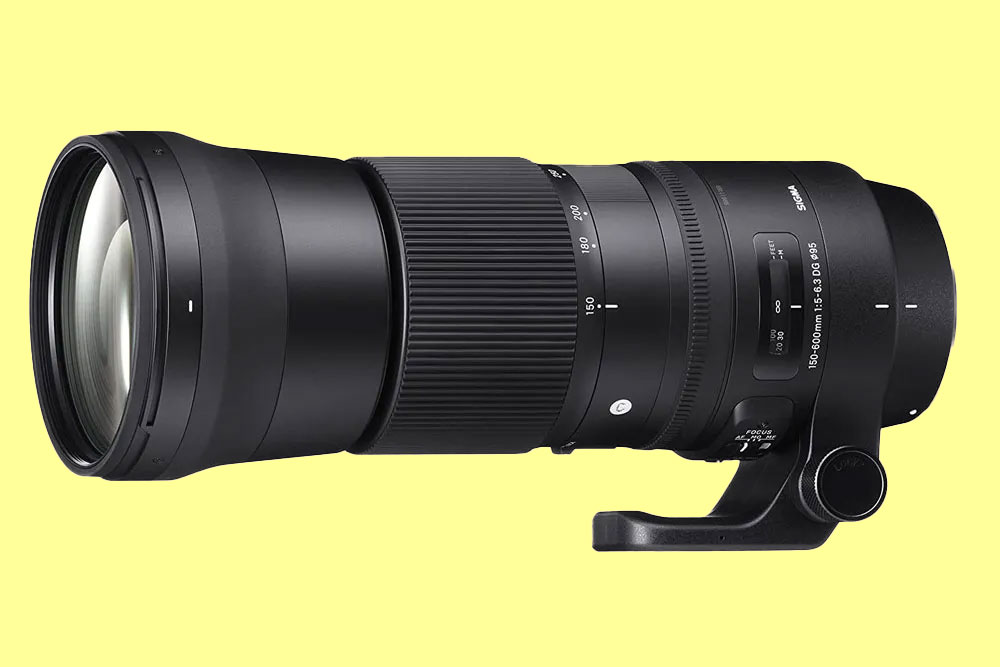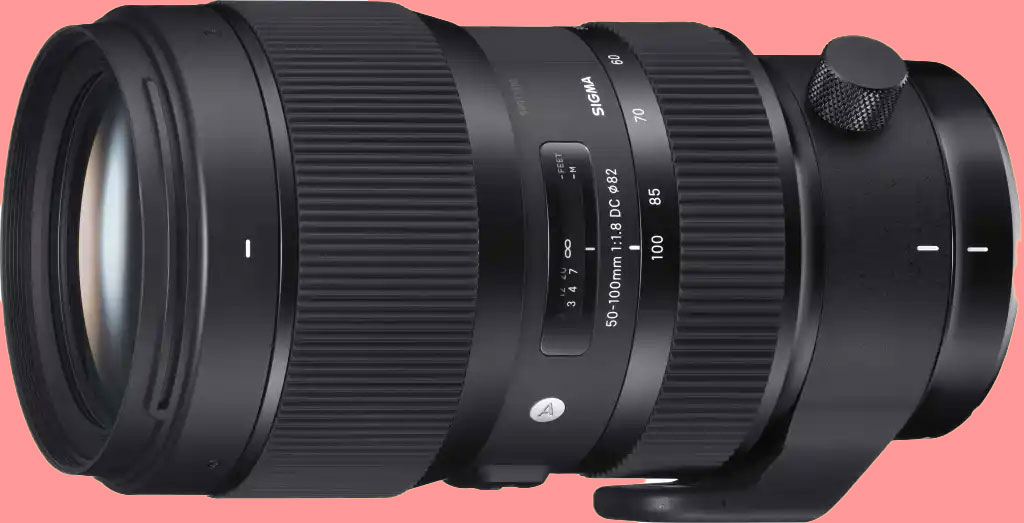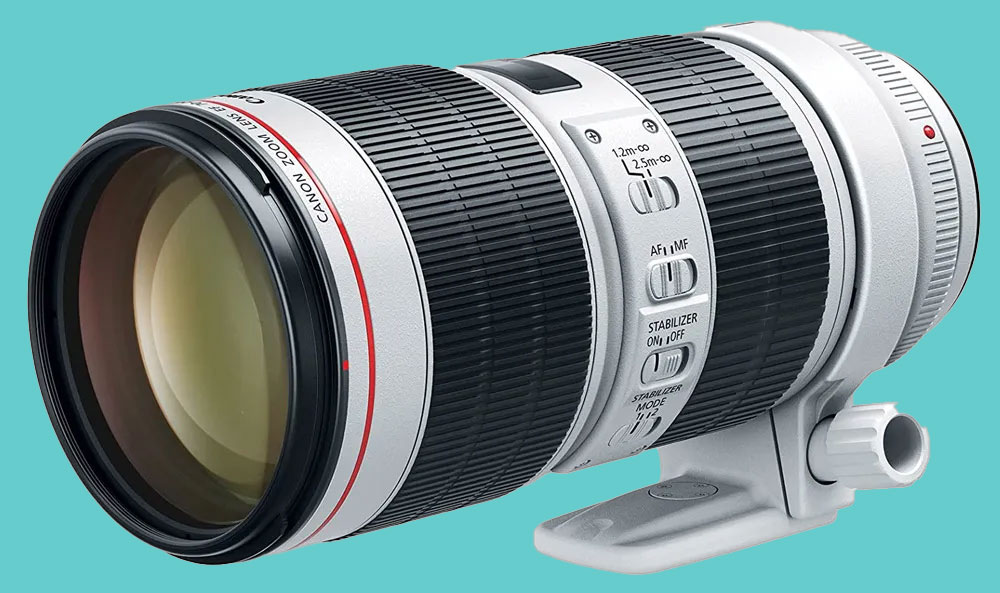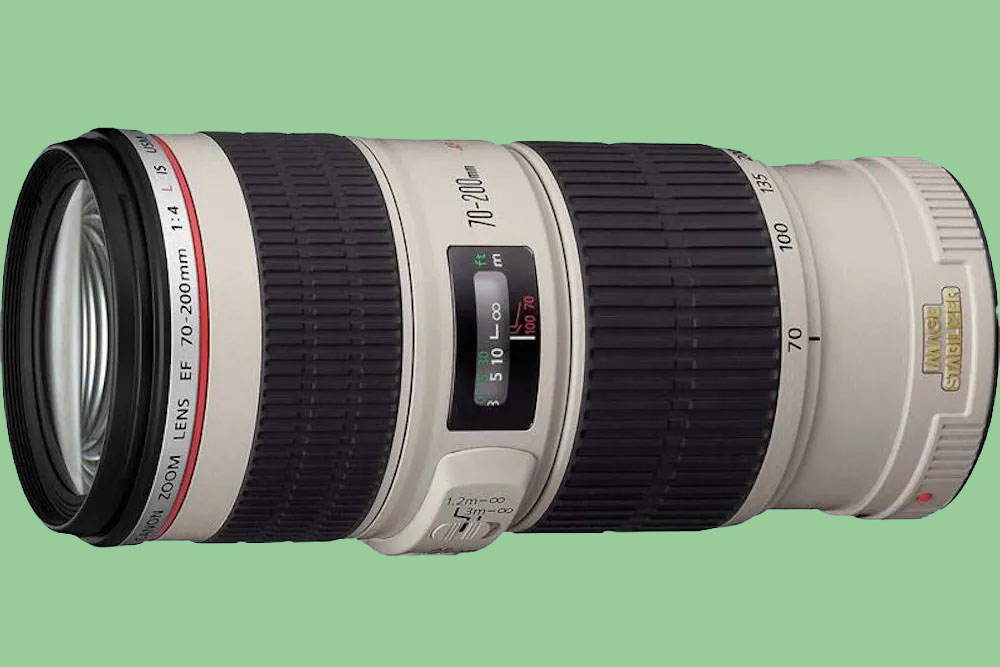Looking for the ultimate in shooting flexibility? We’ve put together a complete guide to the best EF-mount zoom lenses for Canon DSLRs.
With the best EF-mount zoom lenses, you and your Canon DSLR are prepared for any eventuality. A zoom lens is fantastic for shooting situations when you don’t know what to expect. A single zoom lets you react in seconds to a scene as it unfolds in a way that the single perspective of a prime lens simply does not afford.
Zoom lenses have a reputation for being inferior to primes, but let’s put it this way – there’s a reason so many professional photographers stick religiously to a 70-200mm f/2.8 .
This makes for many cost-effective options on the second-hand market: the professional lenses of a few years ago are bargains today. Fantastic zooms used by pro photographers can be acquired at a fraction of the cost – particularly now so many have migrated to mirrorless and Canon’s EOS R system. In this guide to the best EF-mount zoom lenses for Canon DSLRs, we’ve included a mix of lenses to buy new, and some that offer tremendous value second-hand.
Our picks are based on the experience of our technical review team, who have tested a huge number of Canon EF-mount zoom lenses over the years. If you’re looking for a camera as well as a lens, we have a useful guide to the best Canon DSLRs, all of which will work well with the lenses we’ve listed here. Alternatively, if it’s Canon’s cutting-edge tech that interests you, check out our run-down of the best Canon mirrorless cameras too.
How to choose an EF-mount zoom lens
The choice of a zoom lens depends much on the type of Canon DSLR camera you have.
Those with a full-frame sensor, such as the Canon EOS 5D Mark IV, or the Canon EOS 5Ds and 5Ds R models, will have a focal length just as is written on the lens.
However, if shooting with an APS-C camera, such as the Canon EOS 7D Mark II, Canon EOS 1300D or the Canon EOS 760D, then take into account the ‘crop factor’. This refers to how the smaller sensor size alters the effective focal length of the lens. With Canon cameras, this crop factor equates to 1.6x the length written on the lens. For example, the equivalent focal length of the standard 18-55mm kit lens supplied with many entry-level APS-C format cameras will actually give a 28-88mm equivalent focal range.
This stuff can be tricky to get one’s head around. Our guide to APS-C versus full-frame provides a more detailed explainer.
What type of zoom?
Next, think about what kind of zoom lens you want. For this article, we have separated the options into standard and telephoto zoom lenses.
Standard zooms are great as ‘everyday’ options, givin a range from wide-angle to short telephoto, and are useful for a wide range of situations.
On the other hand, telephoto lenses are great for sports, action, or wildlife – basically for any subject where you can’t get particularly close to the subject.
Without further ado, here are our picks for the current best EF-mount zoom lenses for Canon DSLRs…
Best standard EF-mount zoom lenses for Canon DSLRs
First up, we cover all the best EF-mount zoom lenses that cover a standard focal range. By ‘standard’, we generally mean a focal range between about 35mm and 75mm, with a bit of wriggle-room on either side. A standard focal length provides a very naturalistic perspective – 50mm, the ur-example of a standard lens, gives about the same field of view as the human eye.
As such, standard lenses are very useful for reportage and documentary photography – essentially any genre where you want your subject to look as it is. A standard zoom gives a little play within this framework, allowing you to close in or back out a little as the situation requires. Here are our favourite standard zoom lenses for Canon EF-mount DSLRs.
At a glance:
- For: APS-C
- Equivalent focal length: 27.2-88mm
- Street price: $800 / £900
At first glance, the Canon EF-S 17-55mm f/2.8 IS USM may sound like a standard kit lens but look closer and it reveals itself as something much more interesting. It’s an APS-C lens for Canon’s EF-S DSLRs, meaning the 17-55mm nominal focal length effectively translates to 27.2-88mm. This, combined with the constant f/2.8 aperture running right the way through the focal range, means this lens functions as a budget equivalent of a 24-70mm f/2.8; one of the most popular lens formats among professional photographers and photojournalists.
Is it as sharp as one of those lenses? Of course not – the best ones cost thousands. But it is a highly capable lens for the price, and balances well on a smaller Canon APS-C DSLR. The stabilisation system is most effective, allowing you to use shutter speeds up to 3 stops slower hand-held without causing image blur from camera shake. This is one of the most generally useful lenses around for Canon’s APS-C DSLRs. Owners of such a camera should seriously consider making room for it it in their kit bag.
Pros:
- Good budget equivalent of a professional standard
- Effective stabilisation system
- Constant f/2.8 aperture
Cons:
- Barrel not fully metal
- Hood and pouch not included
Sigma 18-35mm f/1.8 DC
At a glance:
- For: APS-C
- Equivalent focal length: 28.8mm-56mm
- Street price: $669 / £649
Normally one of the first things sacrificed to give a lens some zoom capability is the maximum aperture, which is why the Sigma 18-35mm f/1.8 DC is like a breath of fresh air. Designed for APS-C Canon DSLRs, it manages a constant aperture of f/1.8 right the way through its zoom range, meaning you aren’t restricted to a wide-angle perspective once the light gets low.
The Sigma 18-35mm f/1.8 DC weighs 810g: not exactly light, but more so than you would expect of a lens with an f/1.8 constant aperture. In performance it generally meets and exceeds the standard you’d expect for a lens at this price, delivering pretty premium sharpness even when used to the full extent of that f/1.8 aperture. It’s not the broadest zoom in the world, even in the realm of standard lenses, but it makes for a solid general-purpose street and documentary shooter with its equivalent 28.8mm-56mm range.
Pros:
- Handy f/1.8 aperture
- Do-everything focal range
- Very sharp even wide open
Cons:
- APS-C only
- Restrictive zoom range
Canon EF 24-105mm f/4L IS II USM
At a glance:
- For: Full-frame
- Street price: $1,299 / £1,389
Falling within Canon’s professional ‘L’ series of lenses, the 24-105mm gives a lot of flexibility in one package. It’s a great ‘walk around’ lens for full-frame cameras, as well as useful for professionals shooting subjects such as wedding and events. At the wide-angle end of the lens is a focal length suitable for landscapes and broader scenes, while at the 105mm end, portraits, still life and more are within reach.
On the downside, the maximum constant aperture of f/4 is not perfectly suited to low-light photography. However, the IS (image stabilisation) does help. Still, if you mainly shoot in good light and want the added reach that the 105mm provides, it might be a better choice than Canon’s other standard telephoto option. In our review we found a lot to praise about this lens, especially the effective stabilisation system. It’s not a huge sharpness upgrade over previous versions, but it does deliver superior images.
Pros:
- Better reach than most standard zooms
- Good vignetting control
- Effective stabilisation
Cons:
- f/4 is restrictive
- Still quite costly
Read our Canon EF 24-105mm f/4L IS II USM Review
Canon EF 24-70mm f/2.8L II USM
At a glance:
- For: Full-frame
- Street price: $1,899 / £2108
Here we have the best compromise for full-frame shooters when it comes to flexibility of focal length and wide aperture. Canon also has a 24-70mm f/4 lens, which is available for less than half the price of the f/2.8 version, which is something to consider if you don’t often shoot in low light. The 24-70mm f/2.8 L II USM is favoured by professionals and enthusiasts alike, giving you a great option for landscapes, portraits and subjects in between.
Pros:
- Superb image quality
- Useful standard focal range
Cons:
- Pro-level price tag
Best telephoto EF-mount zoom lenses for Canon DSLRs
A telephoto zoom is the ideal way to tackle a broad range of subjects to which you can’t get too close. Most commonly favoured by those who shoot wildlife or sports photography, telephoto lenses tend to be big, unwieldy and expensive, but allow capture of images that simply can’t be had any other way. While professional wildlife photographers favour prime lenses for their unmatched image quality, don’t count out zooms, as many still offer outstanding sharpness. Here are our favourite telephoto zooms for Canon EF-mount.
Sigma 150-600mm f/5-6.3 DG OS HSM S
At a glance:
- For: Full-frame
- Street price: $900 / £849
It’s hard to argue with a zoom range this expansive – and the Sigma 150-600mm f/5-6.3 DG OS HSM S delivers the goods in imaging performance as well. We took it out for a motorsports-shooting field test, accompanied by a stalwart Canon EOS 5D Mark III DSLR. It delivered spectacular images, with a capable AF system that nailed the shot time and again. It’s a big lens, with an zoom mechanism that demands quite a bit of the user to physically operate – a by-product of having to manipulate an optical construction of 24 elements in 16 groups.
This is an outdoors lens, and Sigma has borne that in mind when putting it together. The construction is hardy, and the big front element well-protected with oil-repellent coatings – you can attach 105mm thread filters to protect it if you want, though these do come at a pretty price. And one thing you’ll also probably want is one of the best monopods, as believe us, this is not a light lens.
Pros:
- Fantastically optimised for sports
- Tough and dirt-resistant
- Autofocus does well
Cons:
- Very heavy
- Requires accessories to work at its best
Read our Sigma 150-600mm f/5-6.3 DG OS HSM S field test
Sigma 50-100mm f/1.8 DC HSM A
At a glance:
- For: APS-C
- Equivalent focal length: 80-160mm
- Street price: $999 / £949
This lens is from Sigma’s superb ‘Art’ lens category. That means super-fine image quality from this APS-C telephoto, which covers a range of classic focal lengths in one package. What’s more, you get a super wide aperture – which, again, is very unusual for a zoom lens, especially a telephoto one. It’s quite big, but certainly takes up less room in a bag than three equivalent prime lenses. In our review, we found a lot to like about this clever lens, included the 9-bladed aperture that makes for silky-smooth bokeh. In our exacting optical tests, the lens performed very well indeed.
Pros:
- Excellent image quality for the price
- Useful f/1.8 aperture
- Optimised for APS-C
Cons:
- On the hefty side
- And a little front-heavy
Read our Sigma 50-100mm f/1.8 DC HSM | A Review
Canon EF 70-200mm f/2.8L IS III
At a glance:
- For: Full-frame
- Street price: $2,099 / £2,199
The latest generation of Canon’s workhorse 70-200mm lens, the Mark III version is extensively weather-sealed for outdoor use. Its front and rear elements are fluorine-coated to repel dust and be easy to clean. Internally, the construction uses fluorite and UD optics. This ensures exactly the level of sharpness and detail that Canon-using pros have come to expect.
Elsewhere, you get a 3.5-stop image stabiliser, a ring-type USM motor for quick and silent autofocusing, and of course, that constant f/2.8 aperture running right through the zoom range. Built to exacting professional standards, this is a lens that is made for many years’ use. Buy one with confidence.
Pros:
- Comprehensively featured
- Built to last
- Excellent image quality
Cons:
- Has held its price
Canon EF 70-200mm f/4L IS USM
At a glance:
- For: Full-frame
- Street price: $1,499 / £1,629
If you can’t quite stretch to the high asking price of the 70-200mm f/2.8L lens, there is another alternative. The 70-200mm f/4 still falls into Canon’s “professional” L-series of lenses, but as a trade-off you get a narrower maximum aperture. An aperture of f/4 is still wide enough for many subjects, though super low light shooting might present a bit of a struggle.
Pros:
- Cheaper than professional version
- Stabilisation included
Cons:
- Not as strong in low light
Tamron SP 70-200mm F/2.8 Di VC USD G2
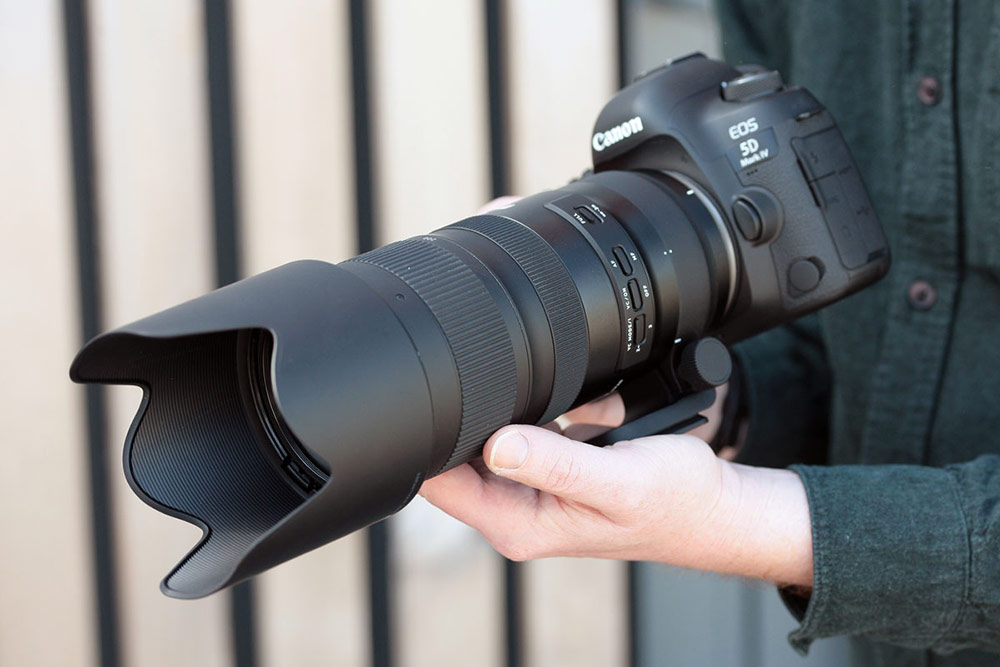
Tamron SP 70-200mm F/2.8 Di VC USD G2 mid-test. Photo credit: Andy Westlake
At a glance:
- For: Full-frame
- Street price: $1,199 / £1,199
Using a third-party lens is a great way to save money when compared to Canon’s proprietary optics. It doesn’t have to mean compromising on image quality either, as this second generation lens from Tamron has proved. Here we’ve got a 4-stop, three-mode image stabilisation (IS) system, which helps to deliver excellent image quality. You get a constant maximum aperture of f/2.8 throughout the zoom range, which makes it great for low-light shooting, too. In our review, we were very impressed with how well this lens performs at its price, and having weather sealing built-in makes it an extra-tempting package.
Pros:
- Impressive stabilisation system
- Constant f/2.8 aperture
- Weather sealed
Cons:
- A little soft at the wide end
- Zoom ring not that smooth
Read our Tamron SP 70-200mm F/2.8 Di VC USD G2 Review
Canon EF 70-300mm f/4-5.6 IS II USM
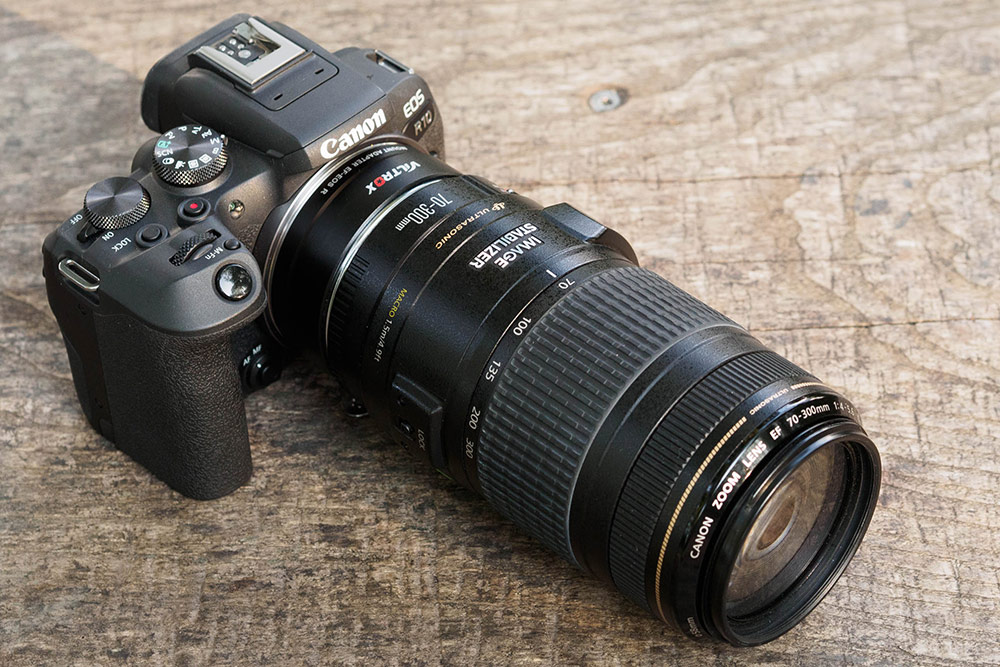
EF lenses like the Canon EF 70-300mm f/4-5.6 IS II USM can be adapted to RF cameras like the EOS R10. Photo credit: Andy Westlake
At a glance:
- For: Full-frame
- Price: $599 / £599
With the EF 70-300mm f/4-5.6 IS II USM, Canon has made a significant and much-needed update to its mid-range ‘telezoom’. Most importantly, it has vastly improved the autofocus compared to the previous version, and up-rated the image stabilisation too. This means that it will deliver more ‘keepers’, either when shooting moving subjects, or hand-held in marginal light. This, in turn, means you can get the most from the lens’ very decent optics. It also offers good value for money, however, if you want a lens hood, this is an optional extra.
Pros:
- Excellent autofocus
- Improved stabilisation
- Cheap for a telezoom
Cons:
- Lens hood not included
- f/4 will be restrictive for some
Read our Canon EF 70-300mm f/4-5.6 IS II USM Review
Sigma 100-400mm f/5-6.3 DG OS HSM Contemporary

Sigma 100-400mm f/5-6.3 DG OS HSM Contemporary
At a glance:
- For: Full-frame
- Street price: $799 / £699
This zoom gives you a long focal length which makes it great for far-off subjects, such as sports, action and wildlife. The wider angle also makes it suitable for weddings, events and some portraits. With optical image stabilisation, a nine-bladed diaphragm, a large rubberised zoom ring and zoom lock that engages at 100mm, it comes with all the features you’d look for in a high-quality tele zoom. It offers a strong optical performance across a good telephoto range at a comparatively affordable price.
Pros:
- Useful zoom range
- Very good value for money
- Lighter than many comparable lenses
Cons:
- No tripod collar
- Not weather sealed
Are there any other EF or EF-S compatible best zoom lenses that you swear by? Let us know!
Further reading
Best Canon EF lenses to buy in 2022
The eight best DSLR lenses you can buy from third-party manufacturers
AP readers share their favourite lenses

